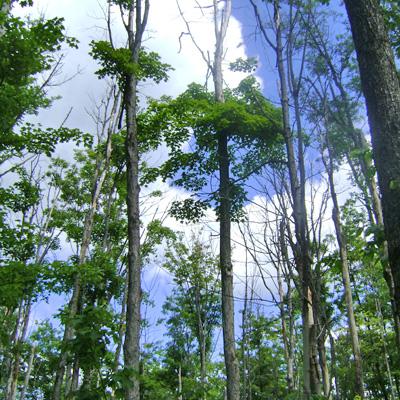A Decision-Support System for Forest Management under Forest Tent Caterpillar Defoliation

Sugar maple is a keystone species of the northern hardwood forest type. Forest tent caterpillar, a native defoliating insect, is an important stressor of sugar maple. The 2002-2007 outbreak of forest tent caterpillar was the largest to occur in the region in the last 50 years and affected millions of acres of forest in the northeastern United States and Canada. Most stands recover following defoliation, even after multiple years. The purpose of this research was to identify environmental factors that predispose sugar maple to decline following insect defoliation.
NSRC researchers assessed the condition of sugar maple trees in 47 new or previously monitored North American Maple Project (NAMP) stands in Massachusetts (2006, 2007), Vermont and New York (2007, 2008). Sugar maples had higher crown dieback and mortality in sites affected by defoliation. Environmental factors contributing to mortality and crown dieback included concave terrain, drier growing seasons during the outbreak, and soils low in base cations, such as calcium, magnesium, and potassium. Researchers produced user-friendly hazard rating tables to help land managers in the Northeast predict which sugar maple stands will be more vulnerable to decline following future defoliation events. Predictions could help direct mitigation efforts such as spraying with insecticides or liming to improve soil base cation status.
Researchers also investigated susceptibility of fragmented vs. continuous northern hardwood forest stands to defoliation based on duration of the recent outbreak. They found that outbreak duration lasted longer in continuous northern hardwood forests, which was opposite of the findings in aspen-dominated forests in Canada.
Download printable version [PDF]
Download full final report [PDF]
